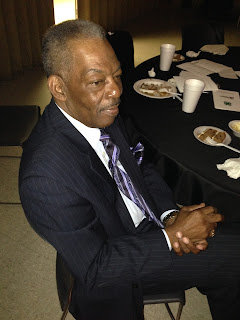Life Science Roots of Learning for JMG
 It was an early morning for our JMG day campers on Tuesday. We loaded up first thing in the morning to head to Durham to the Life Sciences Museum. Once we unloaded from the vans we
It was an early morning for our JMG day campers on Tuesday. We loaded up first thing in the morning to head to Durham to the Life Sciences Museum. Once we unloaded from the vans we  loaded ourselves into the Butterfly Pavilion to check out the inhabitants and to see a butterfly release first thing. The entomologist told us that at around 11 in the morning the butterflies are waking up and at their most active and by three in the afternoon they are starting to rest. Several of our campers were treated to the surprise of having a butterfly land on them or walk with them.
loaded ourselves into the Butterfly Pavilion to check out the inhabitants and to see a butterfly release first thing. The entomologist told us that at around 11 in the morning the butterflies are waking up and at their most active and by three in the afternoon they are starting to rest. Several of our campers were treated to the surprise of having a butterfly land on them or walk with them. From the butterfly pavilion we split up into two groups and headed on our way. We got to visit a small farm animal area complete with pot belly pigs, bunnies, goats, cows, sheep, and a donkey with a ball. Then we checked out some smaller creatures, insects. Not just any insects, we saw things like really big tarantulas, cockroaches, ants, spiders, and even poisonous frogs. Some of our youth took to a microscope to see things like fruit flies, aphids, and larvae.
 We visited the past in with the dinosaur trail. Our campers had a chance to mine for fossils. Many came home with pockets full of sharks teeth, coral and sea shells. Then we visited the wild and got fairly close to a bunch of bears, saw foxes, lemurs, and paddled like ducks. As we walked through wetlands we saw giant lilly pads and had a chance to walk to the wind.
We visited the past in with the dinosaur trail. Our campers had a chance to mine for fossils. Many came home with pockets full of sharks teeth, coral and sea shells. Then we visited the wild and got fairly close to a bunch of bears, saw foxes, lemurs, and paddled like ducks. As we walked through wetlands we saw giant lilly pads and had a chance to walk to the wind.Wind is a section of the museum that shows the power of the wind. Everything from mist areas, sailing boats, birds, the power of wings, and sound waves and how they move through the air. The youth also had the opportunity to play with a gigantic conveyor belt that took seed particles up into the air and dropped them, much like the wind does.
 After the lessons of the wind we enjoyed the wind as we played in the huge outdoor activity area. Our youth checked out a small garden, climbed on a train, played with sand (not silt and they can tell you the difference), and made music from lots of metal. If that wasn't enough they had the opportunity to go inside and make weather. They made a tornado, learned about fog and weather patterns. Our youth then conducted science experiments on water resistant fabrics and made mechanical contraptions that moved golf balls, and perhaps other things in the future.
After the lessons of the wind we enjoyed the wind as we played in the huge outdoor activity area. Our youth checked out a small garden, climbed on a train, played with sand (not silt and they can tell you the difference), and made music from lots of metal. If that wasn't enough they had the opportunity to go inside and make weather. They made a tornado, learned about fog and weather patterns. Our youth then conducted science experiments on water resistant fabrics and made mechanical contraptions that moved golf balls, and perhaps other things in the future.Tomorrow we are back at the office having piles of fun as we get down and dirty learning about everything green again tomorrow.

.jpg)

Comments